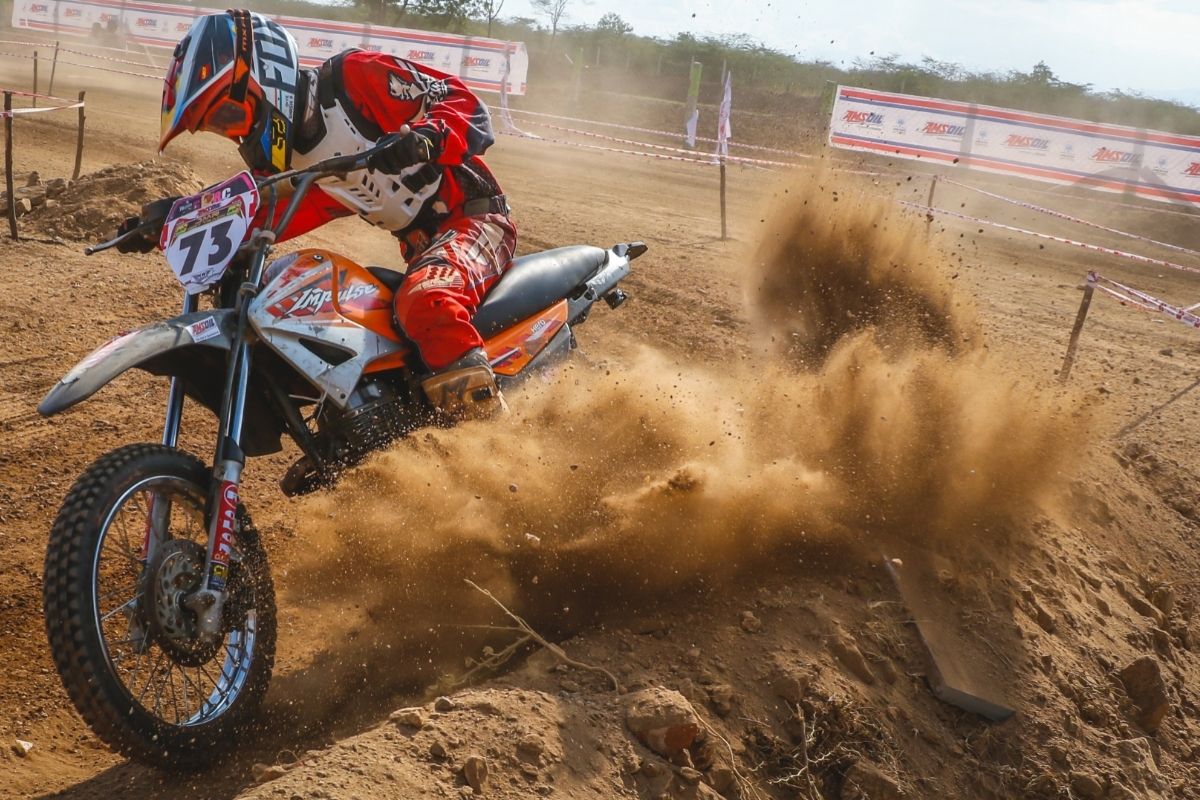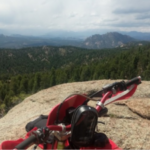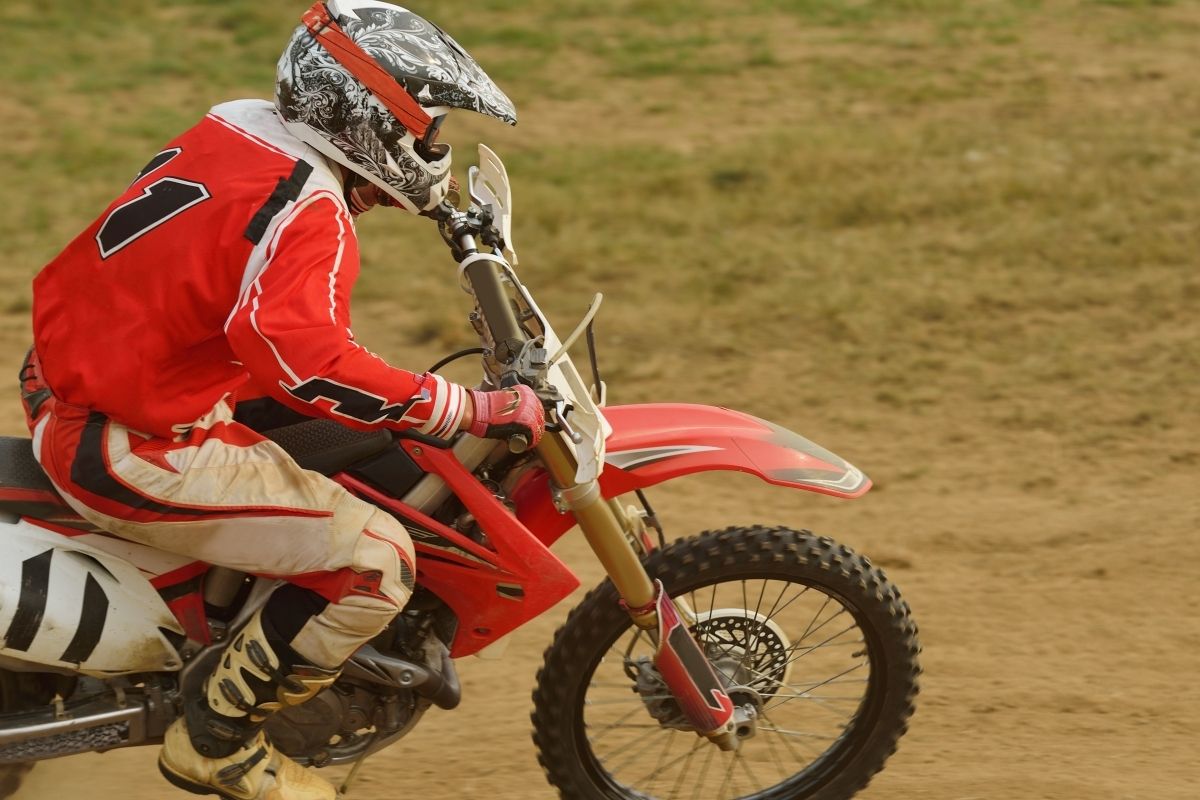ATVs, or all-terrain vehicles, are motorized vehicles that are designed for both on- and off-road use. ATVs have become increasingly popular in recent years due to their versatility and the fact that they can be used in a variety of different terrains.
ATVs are ideal for those who enjoy outdoor activities such as hunting, fishing, camping, and recreational driving. They are also popular for racing as they provide a thrilling ride and can reach speeds of up to 70 miles per hour.
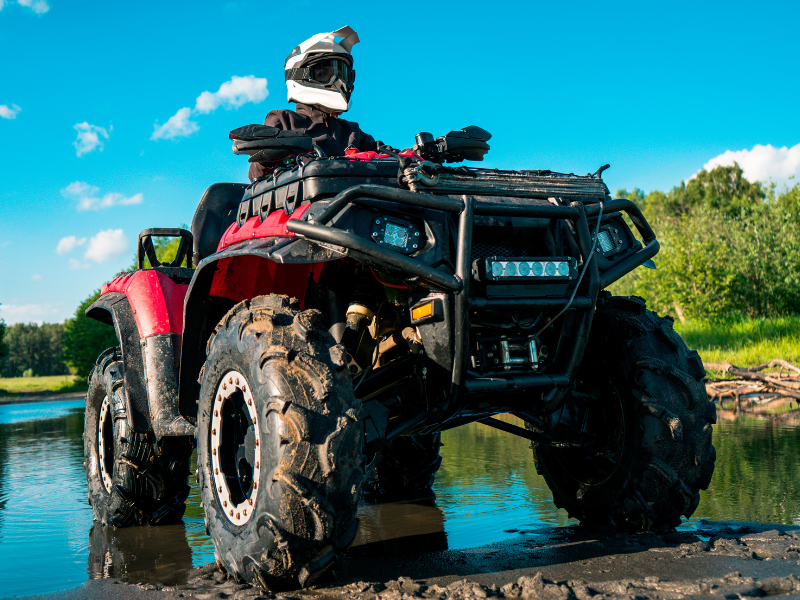
The benefits of ATVs include their agility and maneuverability while still being able to handle uneven terrain and steep hillsides, as well as their ability to tow heavy loads. Additionally, ATVs are less expensive than other means of off-road transportation, making them more accessible to those who do not have a lot of money to spend.
Despite their benefits and popularity, ATV riders must always take extra precautions when riding an ATV in order to ensure their own safety and that of others. Injury and death due to ATV accidents are serious issues in many places around the world, with over 800 deaths occurring annually in the United States alone. Yesterday we were told about a tragic ATV accident that serves as yet another reminder of the importance of being aware of the risks associated with riding off-road vehicles.
ATV accidents are a common occurrence and can be caused by various factors including operator error, driver inexperience, reckless driving, alcohol consumption, or even poorly maintained vehicles. In this article, we will discuss five of the most common ATV accidents, their causes, and how to avoid them. With this knowledge and a few safety precautions, you can ensure your next ride is safe and enjoyable. So let’s get started!
The Dangers of ATV Riding: 5 Most Common ATV Accidents
The first step in understanding ATV safety is learning about the most common types of ATV accidents and their causes. So before you take your next ride, let’s take a look at five of the most common ATV accidents and their causes. Understanding how to prevent these accidents is key to enjoying the freedom of off-road travel while staying safe.
1. Collisions with a Stationary Object
One of the most common causes of ATV accidents is collisions with a stationary objects such as trees, rocks, or other structures. This type of accident can be caused by driver inexperience, poor vehicle maintenance, speed, and operator error. In order to prevent this type of accident, it is important to make sure that you are driving within your skill level and to slow down when approaching obstacles. It is also important to check the condition of your ATV before each ride, as faulty brakes or worn tires can increase the likelihood of such accidents. Moreover, it is essential to don protective apparel like a helmet and other safety gear in order to minimize the risk of serious damage if an accident were to occur.
2. Collisions with Another Vehicle or Person
Another common type of ATV accident is collisions with another vehicle or person. In most cases, this type of accident occurs when two ATVs are traveling in the same direction and one veer into the other’s path. This type of accident is often caused by driver inattention, speeding, or reckless driving. In order to avoid this type of accident, it is important to be aware of your surroundings and to stay within the speed limit at all times. Wearing protective gear is essential for reducing the likelihood of a severe injury in the event of an ATV accident – so make sure to don your safety equipment before hopping on!
3. Falling Off the ATV
Falling off the ATV is another common cause of ATV accidents. This type of accident can be caused by many different factors including driver inexperience, poor vehicle maintenance, slippery surfaces, and speed. In order to prevent this type of accident, it is important to make sure that you are driving within your skill level and to slow down when approaching obstacles. Prior to each journey, it is essential to inspect the condition of your ATV. Defective brakes or worn tires can enhance the possibility of slipping off an all-terrain vehicle, so ensure that you evaluate your ride every time before setting out on a new adventure! Additionally, it is important to wear appropriate safety gear in order to reduce the risk of serious injury in the event of a fall.
4. Rollovers
Rollovers are another type of ATV accident and can be caused by sharp turns, speed, or obstacles in the path. In order to prevent this type of accident, it is important to slow down when approaching turns and obstacles and to keep both hands on the handlebars at all times. Furthermore, make sure to take note of your environment and wear a helmet as well as other protective gear while riding an ATV in order to decrease the possibility of suffering severe injury should you experience a rollover.
5. Unexpected Collision Wildlife on the Trail
Finally, it is important to be aware of unexpected wildlife on the trail that can cause ATV accidents. Deer, elk, bears, and other animals can suddenly appear in your path and cause a collision. In order to prevent this type of accident, it is important to keep an eye out for wildlife while riding and take extra caution when traveling in areas known for animal activity. To reduce the risk of injury in a collision, it is imperative to wear protective gear while riding an ATV.
ATV riding can be a fun and exhilarating activity, however, it is important to take the necessary safety precautions to avoid ATV accidents. To reduce the chances of ATV accidents and minimize injury, it is important to check your ATV before each ride, be aware of your surroundings, drive within your skill level and speed limit, wear appropriate safety gear, and keep an eye out for wildlife. With these precautions in mind, ATV riders can enjoy their time on the trails safely.
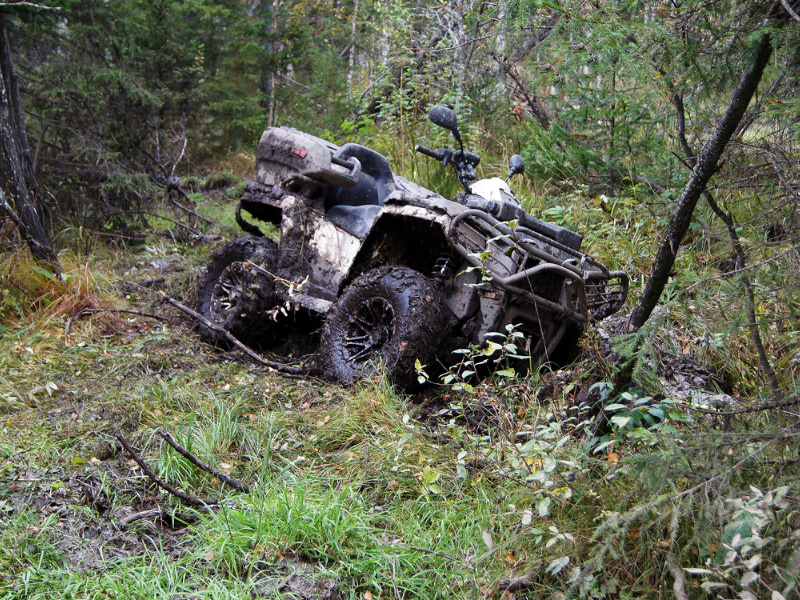
Common Causes of ATV Accidents
As we have said before, ATV accidents are unfortunately a common occurrence, and they can result in serious injuries or even death. While these types of accidents may be caused by a variety of factors, there are some common causes that we should all be aware of.
Next, we will discuss the most common causes of ATV accidents. Understanding the risks can help us all stay safe while enjoying the outdoors on our ATVs.
Driver Inexperience & Negligence
Driver inexperience is one of the most common causes of ATV accidents. When drivers do not have proper training or experience with off-road vehicles, they can easily make mistakes that lead to accidents. Even experienced ATV riders can be negligent when it comes to taking necessary safety precautions before heading out on their rides. Taking safety classes and double-checking equipment before going out can help to reduce the chances of an ATV accident due to inexperience or negligence.
Reckless Driving/Speeding
Another major contributor to ATV accidents is reckless driving and speeding. When riders are traveling at high speeds, they have less time to react in the event of an unexpected obstacle or hazard. Speeding also increases the chances of losing control and flipping the ATV, which can result in serious injuries. It is important to remember to respect the terrain and stay within speed limits while riding on ATVs.
Poorly Maintained ATVs
Poorly maintained ATVs can also contribute to accidents. If an ATV is not properly serviced, it can suffer from mechanical problems that may cause a rider to lose control or even crash. Regular maintenance and inspections are key to keeping an ATV in top working condition, and checking for any potential issues before heading out on a ride can help to prevent an ATV accident.
Riding Without Protective Clothing/Gear
Not wearing the proper protective clothing and gear while riding on an ATV is another common cause of accidents. Helmets are essential for protecting riders’ heads in the event of a crash, and long pants and boots can help to protect the rest of the body from being scraped and cut by rocks, branches, or other debris. Wearing protective clothing and gear is the best way to stay safe while riding on ATVs.
Alcohol Consumption/Substance Abuse
Another major cause of ATV accidents is alcohol consumption and/or substance abuse. Alcohol impairs judgment and reaction time, making it difficult for a rider to react quickly in the event of an unexpected obstacle or hazard. Substance abuse can also have similar effects, leading to ATV accidents that could otherwise be avoided. For these reasons, it is important to avoid riding on ATVs after consuming alcohol or drugs.
By understanding the common causes of ATV accidents, we can all stay safe while enjoying our favorite outdoor activities. Accidents do happen, but by being aware of the risks and taking necessary safety precautions, we can help to prevent ATV accidents from occurring. Remember to always wear protective clothing and gear, never ride under the influence, keep your ATV properly maintained, and observe speed limits to reduce the chances of an ATV accident.
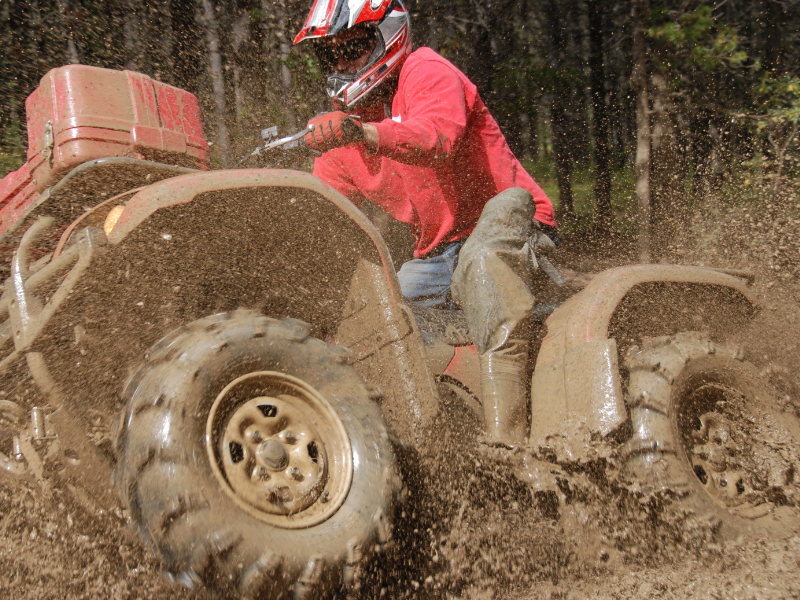
Tips for ATV Safety: How to Avoid ATV Accidents
We’ve already reviewed the various types and sources of ATV crashes, and now let’s move on to offering suggestions for avoiding them. With proper safety precautions in place, ATV riders can greatly reduce their risk of an accident.
1. Wear Appropriate Safety Gear At All Times
Wear appropriate protective gear when operating an ATV, including a helmet, goggles, gloves, boots, and other protective clothing. A full-face helmet with a visor is highly recommended as it offers the most complete protection in an accident. In addition, always ensure that your ATV has functioning headlights and tail lights for visibility in low-light conditions. Wearing bright colors can also help make you more visible to other riders and vehicles on the road.
2. Follow the Manufacturer’s Guidelines for Operation
It is important to familiarize yourself with the manufacturer’s guidelines and specifications for operating an ATV, such as speed limits and weight restrictions. A rider should always operate an ATV within its designated parameters to prevent accidents and ensure safety. Be sure to check the owner’s manual for any maintenance requirements, such as tire pressure or oil level checks, as a properly maintained ATV is much less likely to be involved in an accident.
3. Never Attempt Maneuvers Beyond Your Skill Level
Even experienced ATV riders should never attempt maneuvers beyond their skill level. ATV riding requires a certain degree of expertise, and it is important to learn and practice the basics before advancing to more difficult or dangerous maneuvers. Learning the basics on flat ground in an open space is recommended for new riders so that they can gain confidence and familiarize themselves with how the ATV handles.
4. Always Follow the Rules of the Road When on a Public Highway
If you are riding an ATV on a public highway, it is important to follow all laws and regulations for that particular road. This means following posted speed limits, yielding to vehicles with the right-of-way, and staying out of restricted areas. It is also important to be aware of traffic conditions and potential hazards, such as potholes or debris in the roadway.
5. Be Aware of Surroundings and Conditions Before Riding
Before riding an ATV, it is important to be aware of your surroundings and the riding conditions. Pay attention to weather conditions, terrain features, and any potential obstacles, such as large rocks or logs. Make sure the terrain is suitable for your ATV, and take into account any slopes or changes in elevation. Always inspect the ATV before each ride to ensure that it is in good working order and that all necessary safety equipment is in place.
6. Do Not Ride Under the Influence of Drugs or Alcohol
Never ride an ATV under the influence of alcohol or drugs. Impaired judgment and coordination can lead to serious accidents, and operating an ATV while intoxicated is illegal in many states. If you plan on riding with friends, make sure that everyone has a designated driver who will remain sober during the ride.
7. Stay Informed About ATV Regulations and Laws
It is important to stay informed about state laws, regulations, and guidelines regarding ATV operation. Familiarize yourself with the rules of the road for public highways and be aware of any local restrictions or special permits that may be required. Pay attention to any safety advisories issued by the manufacturer and make sure you are aware of any recent ATV accident yesterday or incident that could affect your ride.
By following these guidelines, ATV riders can stay safe and enjoy their rides without putting themselves at risk of an ATV accident.
ATV Safety: Key Guidelines to Prevent an ATV Accident
At the end of the day, ATV riding can be a fun and exhilarating experience. However, safety should always be top of mind when operating an ATV. By following the guidelines outlined above, ATV riders can stay safe and enjoy their ride without risking serious injury or even death due to an ATV accident. Remember to wear the appropriate safety gear, never attempt maneuvers beyond your skill level, abide by all ATV laws and regulations, remain aware of your surroundings and riding conditions, and never ride under the influence of alcohol or drugs. With these tips in mind, ATV riders can safely enjoy their rides for years to come.
Happy ATV Riding!
Related Resources:
How Can I Make a Dirt Bike Legal for Street Use?
- 10 Ways People Screw Up Buying Used Dirt Bikes - August 3, 2023
- How to Choose an ATV Insurance Policy Without Paying More? - July 19, 2023
- 6 Reasons to Switch to Off-Road Electric Bikes - July 19, 2023




